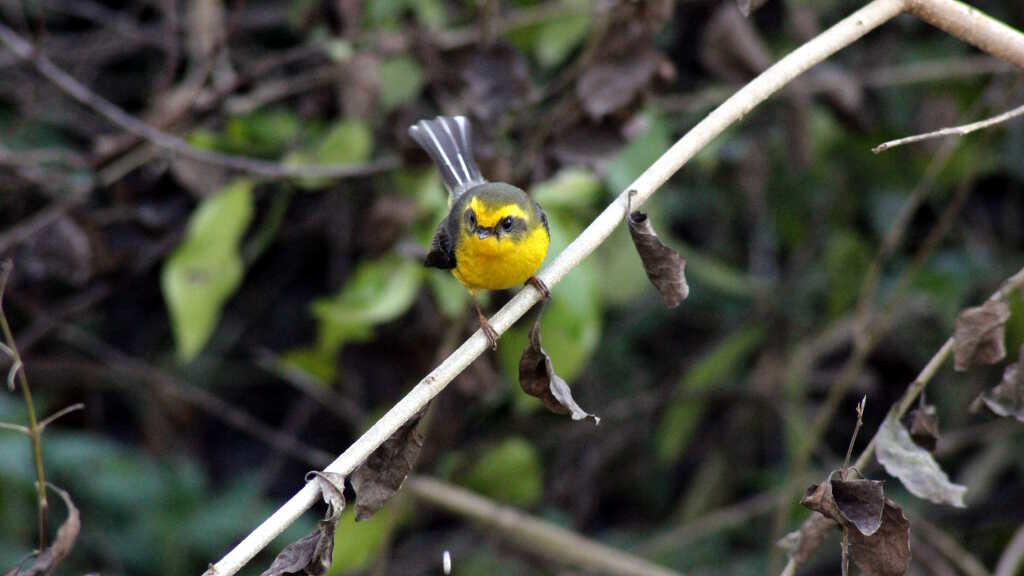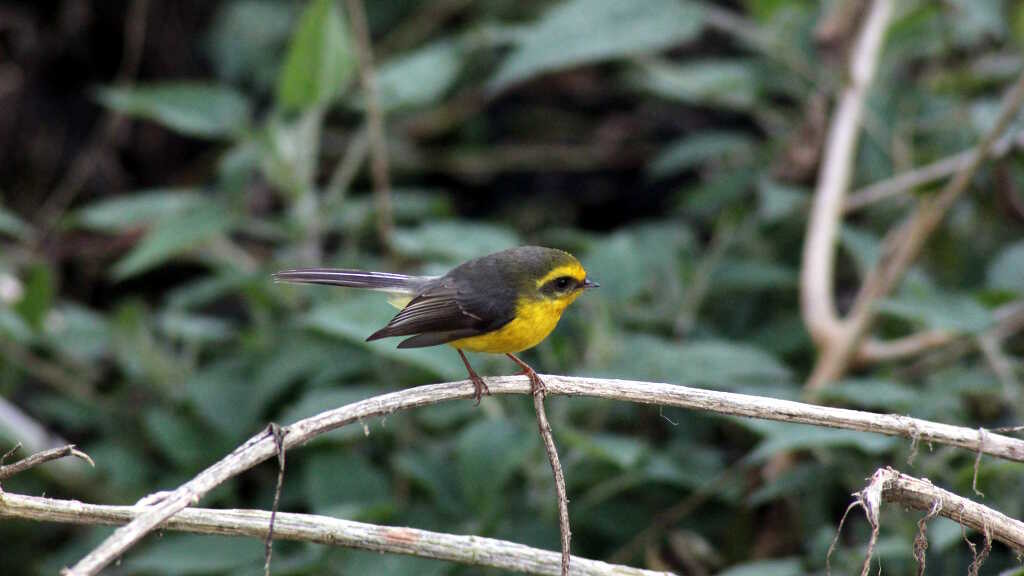
Yellow-bellied fantail
The Yellow-bellied Fantail (Chelidorhynx hypoxanthus) is a vibrant and agile bird found across the mid-elevation forests of the Great Himalayan National Park (GHNP). Its bright yellow belly, olive upperparts, and distinctive white eye-ring make it a favorite among birdwatchers exploring the park’s diverse habitats. The bird’s characteristic tail-flicking behavior and sharp, high-pitched calls make it both visible and audible throughout forest trails.
Habitat and Behavior in GHNP
In GHNP, the Yellow-bellied Fantail is typically found between 1,800 and 3,200 meters above sea level, favoring broadleaf and mixed forests, often near streams or damp ravines. It is particularly common in Tirthan and Sainj valleys, where it flits actively through the understorey and mid-canopy levels, often joining mixed-species foraging flocks.
The bird is incredibly energetic and seldom stays still, frequently flicking its tail sideways and up while darting around in pursuit of small insects. Its agility in catching prey mid-air makes it an efficient insectivore and a lively addition to GHNP’s avian biodiversity.
Breeding and Feeding
The Yellow-bellied Fantail breeds during the spring and early summer months. Its nest, usually shaped like a small cup, is built using moss, rootlets, and cobwebs, often secured to branches in shaded, damp areas. Both parents are involved in feeding the chicks, making short, quick flights to gather insects and return rapidly.
The bird’s diet consists mainly of gnats, flies, moths, and other small invertebrates. Its ability to adapt to various forested environments makes it a common yet significant species within GHNP’s avifauna.
Conservation Status
The species is listed as of Least Concern by the IUCN, but it benefits greatly from the protected habitats within GHNP. Since it thrives in intact, undisturbed forests, its healthy presence in the park reflects the ongoing success of conservation efforts in the region.




